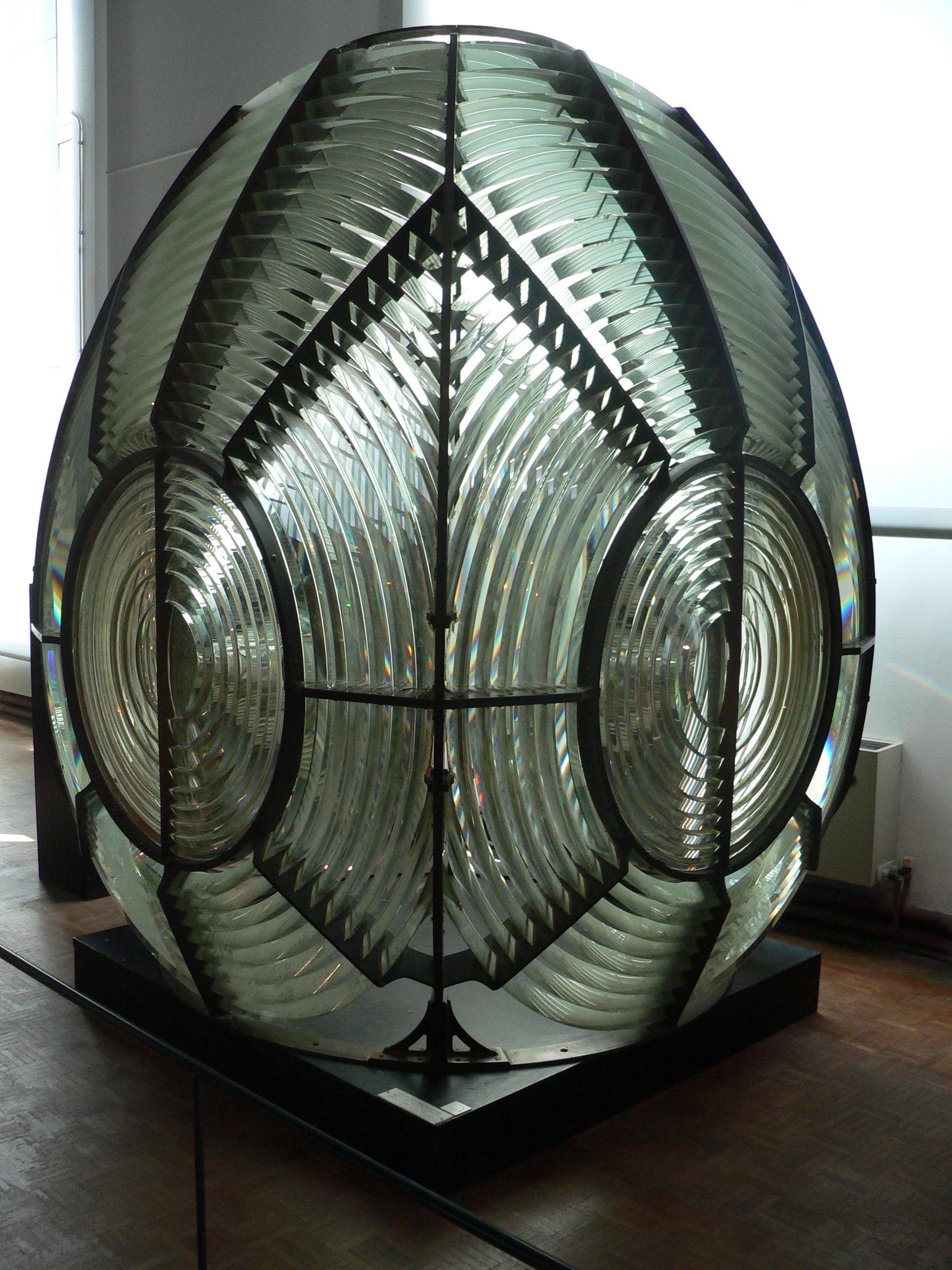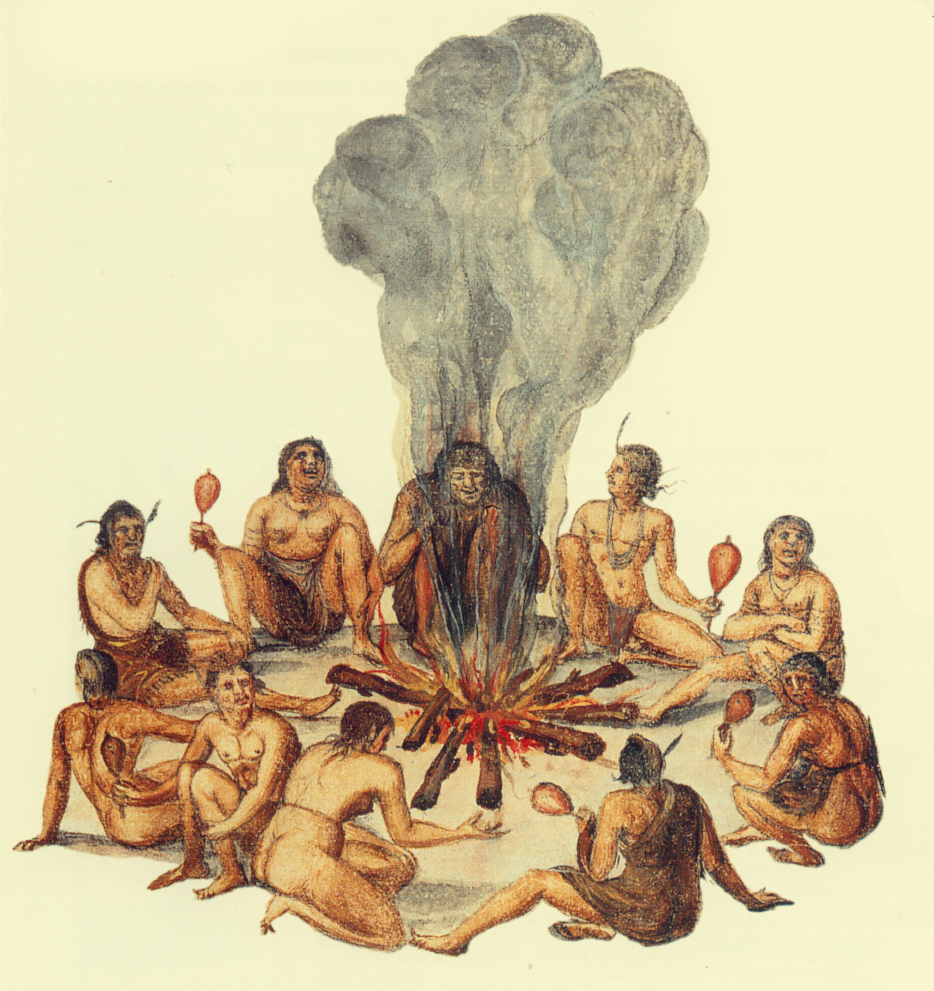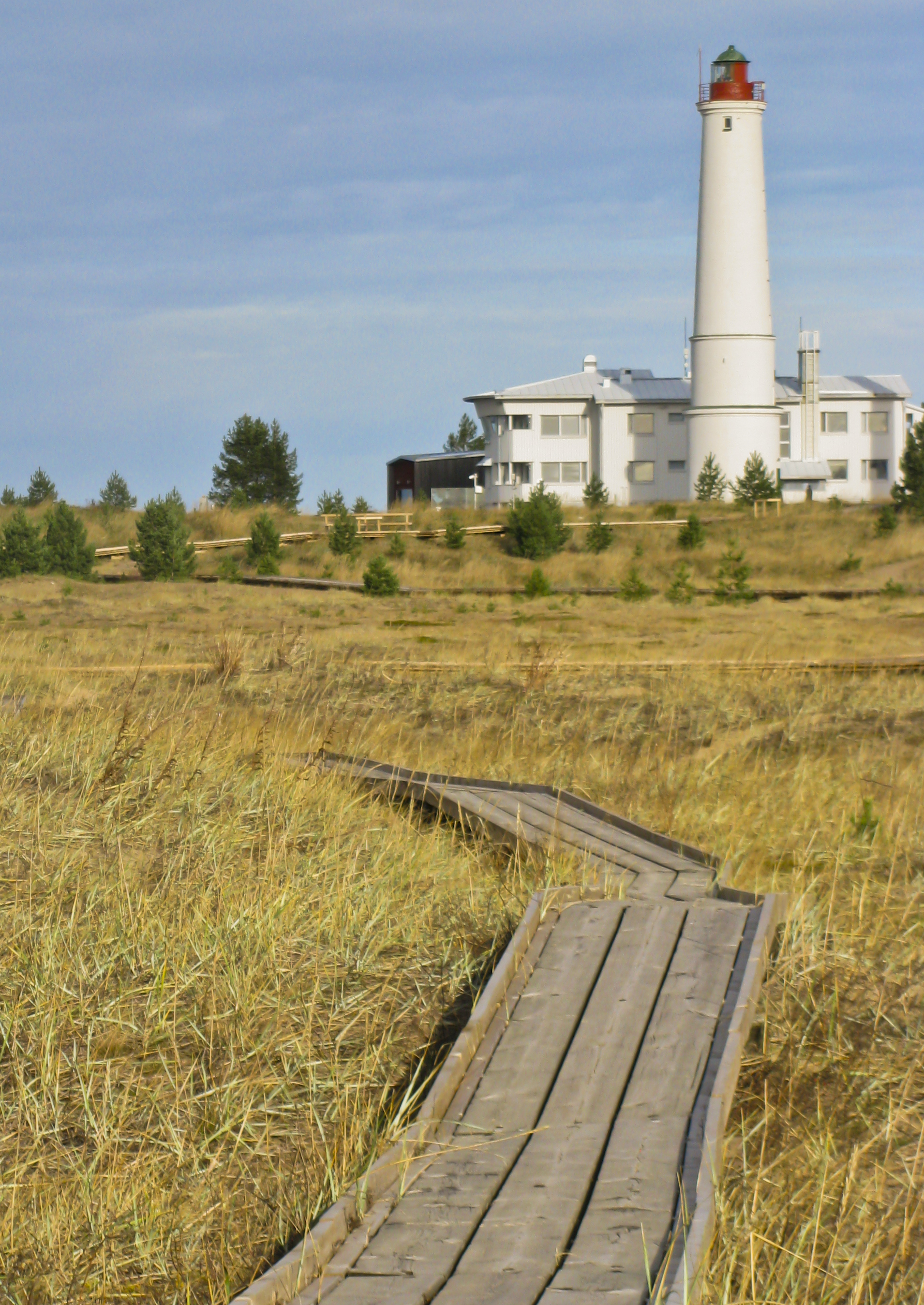|
Roanoke Marshes Light
Roanoke Marshes Light was a screw-pile lighthouse in North Carolina, United States. History Little is recorded about this light, which was replaced in 1955 with an automated light on a shorter tower. It marks the south entrance to the channel through Croatan Sound, to the east of a marshy shoal extending from the western shore. This places it in the deepest bottom in the area. There was a predecessor light on this site, beginning in 1857. The pictured light, of conventional screw-pile construction, was lit in 1877. When the light was decommissioned, an unsuccessful attempt was made by a private party to move it, but the house was lost in the sound. In 2004, a replica of the light was dedicated at the Roanoke Island Maritime Museum in Manteo, North Carolina Manteo ( ) is a town in Dare County, North Carolina, United States, located on Roanoke Island. The population was 1,602 at the 2020 census. It is the county seat of Dare County. History The town is named for an America ... [...More Info...] [...Related Items...] OR: [Wikipedia] [Google] [Baidu] |
Screw-pile Lighthouse
A screw-pile lighthouse is a lighthouse which stands on piles that are screwed into sandy or muddy sea or river bottoms. The first screw-pile lighthouse to begin construction was built by the blind Irish engineer Alexander Mitchell. Construction began in 1838 at the mouth of the Thames and was known as the Maplin Sands lighthouse, and first lit in 1841. However, though its construction began later, the Wyre Light in Fleetwood, Lancashire, was the first to be lit (in 1840). In the United States, several screw-pile lighthouses were constructed in the Chesapeake Bay due to its estuarial soft bottom. North Carolina's sounds and river entrances also once had many screw-pile lights. The characteristic design is a -storey hexagonal wooden building with dormers and a cupola light room. History Non-screwpile (straightpile) tubular skeletal tower lighthouses were built, usually of cast-iron but also of wrought-iron piles, both onshore and offshore, typically on soft bottoms such ... [...More Info...] [...Related Items...] OR: [Wikipedia] [Google] [Baidu] |
Cast-iron
Cast iron is a class of iron–carbon alloys with a carbon content of more than 2% and silicon content around 1–3%. Its usefulness derives from its relatively low melting temperature. The alloying elements determine the form in which its carbon appears: white cast iron has its carbon combined into an iron carbide named cementite, which is very hard, but brittle, as it allows cracks to pass straight through; Grey iron, grey cast iron has graphite flakes which deflect a passing crack and initiate countless new cracks as the material breaks, and Ductile iron, ductile cast iron has spherical graphite "nodules" which stop the crack from further progressing. Carbon (C), ranging from 1.8 to 4 wt%, and silicon (Si), 1–3 wt%, are the main alloying elements of cast iron. Iron alloys with lower carbon content are known as steel. Cast iron tends to be brittle, except for malleable iron, malleable cast irons. With its relatively low melting point, good fluidity, castability ... [...More Info...] [...Related Items...] OR: [Wikipedia] [Google] [Baidu] |
Wood
Wood is a structural tissue/material found as xylem in the stems and roots of trees and other woody plants. It is an organic materiala natural composite of cellulosic fibers that are strong in tension and embedded in a matrix of lignin that resists compression. Wood is sometimes defined as only the secondary xylem in the stems of trees, or more broadly to include the same type of tissue elsewhere, such as in the roots of trees or shrubs. In a living tree, it performs a mechanical-support function, enabling woody plants to grow large or to stand up by themselves. It also conveys water and nutrients among the leaves, other growing tissues, and the roots. Wood may also refer to other plant materials with comparable properties, and to material engineered from wood, woodchips, or fibers. Wood has been used for thousands of years for fuel, as a construction material, for making tools and weapons, furniture and paper. More recently it emerged as a feedstock for the production ... [...More Info...] [...Related Items...] OR: [Wikipedia] [Google] [Baidu] |
Fresnel Lens
A Fresnel lens ( ; ; or ) is a type of composite compact lens (optics), lens which reduces the amount of material required compared to a conventional lens by dividing the lens into a set of concentric annular sections. The simpler Dioptrics, dioptric (purely refraction, refractive) form of the lens was first proposed by Georges-Louis Leclerc, Comte de Buffon, and independently reinvented by the French physicist Augustin-Jean Fresnel (1788–1827) for use in lighthouses. The Catadioptric system, catadioptric (combining refraction and reflection) form of the lens, entirely invented by Fresnel, has outer Prism (optics), prismatic elements that use total internal reflection as well as refraction to capture more oblique light from the light source and add it to the beam, making it visible at greater distances. The design allows the construction of lenses of large aperture and short focal length without the mass and volume of material that would be required by a lens of conventional ... [...More Info...] [...Related Items...] OR: [Wikipedia] [Google] [Baidu] |
Lighthouse
A lighthouse is a tower, building, or other type of physical structure designed to emit light from a system of lamps and lens (optics), lenses and to serve as a beacon for navigational aid for maritime pilots at sea or on inland waterways. Lighthouses mark dangerous coastlines, hazardous shoals, reefs, rocks, and safe entries to harbors; they also assist in aerial navigation. Once widely used, the number of operational lighthouses has declined due to the expense of maintenance and the advent of much cheaper, more sophisticated, and more effective electronic navigational systems. History Ancient lighthouses Before the development of clearly defined ports, mariners were guided by fires built on hilltops. Since elevating the fire would improve visibility, placing the fire on a platform became a practice that led to the development of the lighthouse. In antiquity, the lighthouse functioned more as an entrance marker to ports than as a warning signal for reefs and promontory, prom ... [...More Info...] [...Related Items...] OR: [Wikipedia] [Google] [Baidu] |
North Carolina
North Carolina ( ) is a U.S. state, state in the Southeastern United States, Southeastern region of the United States. It is bordered by Virginia to the north, the Atlantic Ocean to the east, South Carolina to the south, Georgia (U.S. state), Georgia to the southwest, and Tennessee to the west. The state is the List of U.S. states and territories by area, 28th-largest and List of U.S. states and territories by population, 9th-most populous of the List of states and territories of the United States, United States. Along with South Carolina, it makes up the Carolinas region of the East Coast of the United States, East Coast. At the 2020 United States census, 2020 census, the state had a population of 10,439,388. Raleigh, North Carolina, Raleigh is the state's List of capitals in the United States, capital and Charlotte, North Carolina, Charlotte is its List of municipalities in North Carolina, most populous and one of the fastest growing cities in the United States. The Charl ... [...More Info...] [...Related Items...] OR: [Wikipedia] [Google] [Baidu] |
Croatan Sound
Croatan Sound is an inlet in Dare County, North Carolina. It connects Pamlico Sound with Albemarle Sound, and is bordered to the east by Roanoke Island; Roanoke Sound is on the other side of the island. Its name comes from the Croatan The Croatan were a small Native Americans in the United States, Native American ethnic group living in the coastal areas of what is now North Carolina. They might have been a branch of the larger Roanoke (tribe), Roanoke people or allied with t ... Indians who once inhabited the area. The Croatan Sound is crossed by two bridges, the older William B. Umstead Bridge, and the newer Virginia Dare Memorial Bridge, which carries U.S. Route 64. External links Bodies of water of Dare County, North Carolina Sounds of North Carolina {{DareCountyNC-geo-stub ... [...More Info...] [...Related Items...] OR: [Wikipedia] [Google] [Baidu] |
Roanoke Island Maritime Museum
Roanoke may refer to: Places *Roanoke Colony, a former English colony that mysteriously disappeared *Roanoke Island, the location of the Roanoke colony in present-day North Carolina *Roanoke River, flowing through Virginia and North Carolina and emptying into Albemarle Sound near Roanoke Island *Roanoke Valley, part of the Great Appalachian Valley near the headwaters of the Roanoke River in Virginia *Roanoke, Alabama *Roanoke, Georgia *Roanoke, Illinois *Roanoke, Indiana *Roanoke, Louisiana *Roanoke, Missouri *Roanoke, Texas *Roanoke, Virginia, the largest US city named Roanoke *Roanoke County, Virginia *Roanoke, West Virginia *Roanoke Rapids, North Carolina *Randolph, Virginia, formerly called Roanoke Other uses *Roanoke tribe, a Carolina Algonquian-speaking tribe in western North Carolina *Roanoke Park (Seattle), a park in Seattle, Washington *USS Roanoke, USS ''Roanoke'', various USN vessels named Roanoke *Roanoke (ship), ''Roanoke'' (ship), an American ship (1892–1905) *Roan ... [...More Info...] [...Related Items...] OR: [Wikipedia] [Google] [Baidu] |
Manteo, North Carolina
Manteo ( ) is a town in Dare County, North Carolina, United States, located on Roanoke Island. The population was 1,602 at the 2020 census. It is the county seat of Dare County. History The town is named for an American Indian named Manteo, a Croatan. Manteo traveled with the English to London in 1584 where he and another Indian, Wanchese, learned to become the liaisons between the Roanoke Colony settlers and the Indians. He also had favorable interaction with British colonist John White. In fact, Manteo was christened and given the name Lord of Roanoke, making him the first American Indian to receive a title of nobility. Eventually, John White's daughter Eleanor married Ananias Dare, and they had the first American-born English child, Virginia Dare. In 1587, Manteo was friendly to White when he returned to find what the final stage of the Roanoke Colony became. When the colonists disappeared after supplies from England were delayed for three years, the ongoing mystery o ... [...More Info...] [...Related Items...] OR: [Wikipedia] [Google] [Baidu] |
Lighthouses Completed In 1877
A lighthouse is a tower, building, or other type of physical structure designed to emit light from a system of lamps and lenses and to serve as a beacon for navigational aid for maritime pilots at sea or on inland waterways. Lighthouses mark dangerous coastlines, hazardous shoals, reefs, rocks, and safe entries to harbors; they also assist in aerial navigation. Once widely used, the number of operational lighthouses has declined due to the expense of maintenance and the advent of much cheaper, more sophisticated, and more effective electronic navigational systems. History Ancient lighthouses Before the development of clearly defined ports, mariners were guided by fires built on hilltops. Since elevating the fire would improve visibility, placing the fire on a platform became a practice that led to the development of the lighthouse. In antiquity, the lighthouse functioned more as an entrance marker to ports than as a warning signal for reefs and promontories, unlike many ... [...More Info...] [...Related Items...] OR: [Wikipedia] [Google] [Baidu] |
Houses Completed In 1877
A house is a single-unit residential building. It may range in complexity from a rudimentary hut to a complex structure of wood, masonry, concrete or other material, outfitted with plumbing, electrical, and heating, ventilation, and air conditioning systems.Schoenauer, Norbert (2000). ''6,000 Years of Housing'' (rev. ed.) (New York: W.W. Norton & Company). Houses use a range of different roofing systems to keep precipitation such as rain from getting into the dwelling space. Houses generally have doors or locks to secure the dwelling space and protect its inhabitants and contents from burglars or other trespassers. Most conventional modern houses in Western cultures will contain one or more bedrooms and bathrooms, a kitchen or cooking area, and a living room. A house may have a separate dining room, or the eating area may be integrated into the kitchen or another room. Some large houses in North America have a recreation room. In traditional agriculture-oriented societies, domes ... [...More Info...] [...Related Items...] OR: [Wikipedia] [Google] [Baidu] |
Lighthouses Completed In 1857
A lighthouse is a tower, building, or other type of physical structure designed to emit light from a system of lamps and lens (optics), lenses and to serve as a beacon for navigational aid for maritime pilots at sea or on inland waterways. Lighthouses mark dangerous coastlines, hazardous shoals, reefs, rocks, and safe entries to harbors; they also assist in aerial navigation. Once widely used, the number of operational lighthouses has declined due to the expense of maintenance and the advent of much cheaper, more sophisticated, and more effective electronic navigational systems. History Ancient lighthouses Before the development of clearly defined ports, mariners were guided by fires built on hilltops. Since elevating the fire would improve visibility, placing the fire on a platform became a practice that led to the development of the lighthouse. In antiquity, the lighthouse functioned more as an entrance marker to ports than as a warning signal for reefs and promontory, prom ... [...More Info...] [...Related Items...] OR: [Wikipedia] [Google] [Baidu] |






